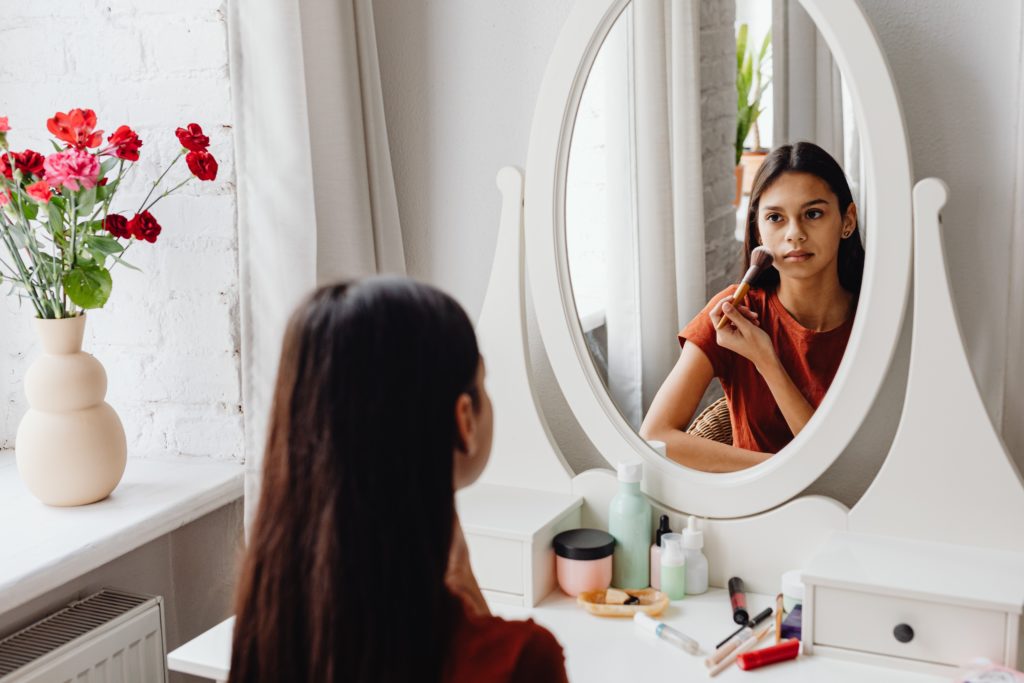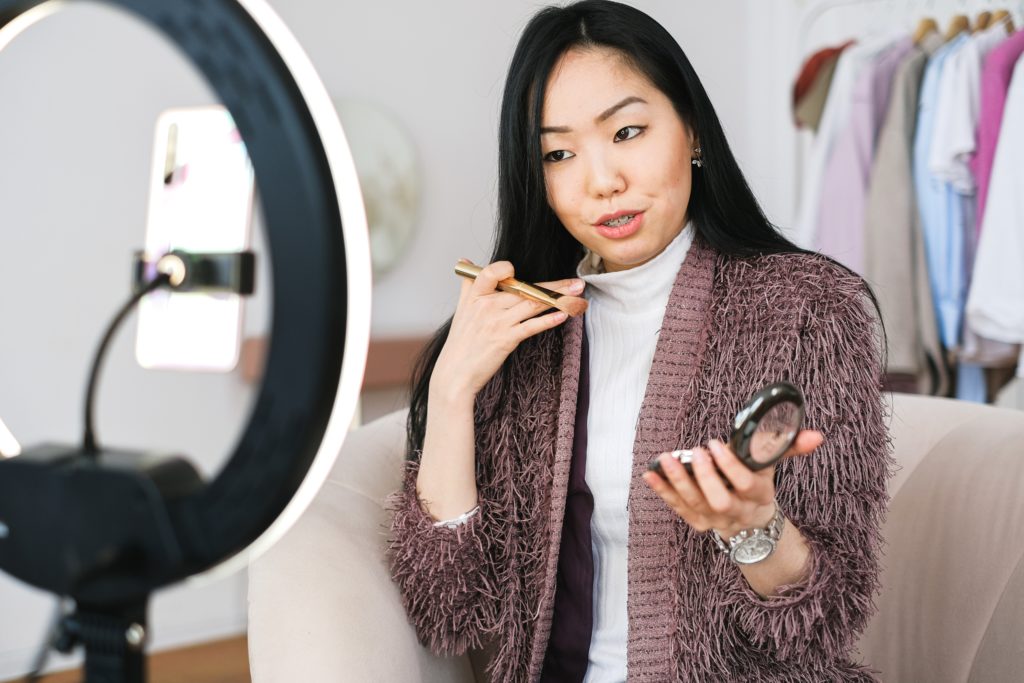Makeup is a popular form of self-expression and creativity. It can be used to enhance natural features or to create a bold and dramatic look. For teenagers, makeup can be an important part of their daily routine as they navigate the challenges of adolescence and begin to explore their personal style.
However, for many teenagers, learning how to apply makeup can be intimidating and overwhelming. In this article, we will provide a comprehensive guide to makeup tips for teenagers, including how to prepare the skin, choose the right products, apply makeup, and remove makeup safely.
Preparing the Skin Before Applying Makeup

Before applying makeup, it is important to prepare the skin properly. This involves cleansing, moisturizing, and applying sunscreen.
Cleansing the Skin
Cleansing the skin removes dirt, oil, and impurities, which can clog pores and lead to breakouts. It is important to choose a cleanser that is appropriate for your skin type. If you have oily skin, look for a foaming or gel-based cleanser to help control oil production. If you have dry or sensitive skin, look for a cream-based cleanser that will hydrate and soothe the skin.
Moisturizing the Skin
Moisturizing the skin is an essential step in any skincare routine. It helps to hydrate the skin and create a smooth base for makeup application. Choose a moisturizer that is appropriate for your skin type. If you have oily skin, look for a lightweight, oil-free moisturizer. If you have dry or sensitive skin, look for a rich, hydrating moisturizer.
Applying Sunscreen
Sunscreen is an important step in any skincare routine, as it helps to protect the skin from the damaging effects of the sun. Choose a sunscreen with an SPF of 30 or higher, and apply it to your face and neck before applying makeup.
Choosing the Right Makeup Products
Choosing the right makeup products can be a daunting task, especially for teenagers who are just starting to experiment with makeup. Here are some tips to help you choose the right products for your skin type and personal style.
Foundation
Foundation is a makeup product used to even out the skin tone and create a smooth, flawless base for other makeup products. When choosing a foundation, consider your skin type and the level of coverage you prefer. If you have oily skin, look for a matte or oil-free foundation. If you have dry or sensitive skin, look for a hydrating or lightweight foundation.
Concealer
Concealer is a makeup product that is used to cover dark circles, blemishes, and other imperfections. When choosing a concealer, consider the level of coverage you need and the shade most appropriate for your skin tone. If you have dark circles under your eyes, choose a concealer with a peach or salmon undertone to counteract the blue or purple color of the circles.
Blush
Blush is a makeup product that is used to add color and dimension to the cheeks. When choosing a blush, consider your skin tone and the level of pigmentation you prefer. If you have fair skin, choose a light pink or peach blush. If you have medium or dark skin, choose a deeper shade of pink, peach, or bronze.
Eyeshadow
Eyeshadow is a makeup product that is used to create a variety of eye looks, from natural to dramatic. When choosing eyeshadow, consider your eye color and the level of pigmentation you prefer. If you have blue eyes, choose shades of brown, taupe, and champagne. If you have green eyes, choose shades of purple, mauve, and lavender. If you have brown eyes, choose shades of gold, copper, and bronze.
Mascara
Mascara is a makeup product that is used to enhance the lashes and create the appearance of fuller, thicker lashes. When choosing a mascara, consider the level of volume, length, and curl you prefer. If you have short lashes, choose a mascara with a volumizing formula. If you have straight lashes, choose a mascara with a curling formula.
Lipstick
Lipstick is a makeup product that is used to add color and texture to the lips. When choosing lipstick, consider your skin tone and the level of pigmentation you prefer. If you have fair skin, choose light, pink or peach shades. If you have medium skin, choose deeper shades of pink, red, or berry. If you have dark skin, choose shades of brown, plum, or burgundy.
Applying Makeup

Applying makeup is a skill that takes practice and patience. Here are some tips to help you create a basic makeup look, a natural-looking makeup look, and a bold makeup look.
Creating a Basic Makeup Look
A basic makeup look is a simple and easy way to enhance your natural features. To create a basic makeup look, follow these steps:
- Apply foundation to your face and neck, blending it evenly with a brush or sponge.
- Apply concealer to any areas that need extra coverage, such as dark circles or blemishes.
- Apply blush to the apples of your cheeks, blending it upwards towards your temples.
- Apply mascara to your upper and lower lashes, starting at the roots and wiggling the wand up to the tips.
- Apply neutral or nude lipstick to your lips, using a lip brush for precision.
Natural-Looking Makeup
A natural-looking makeup look is a great way to enhance your features without looking too made up. To create a natural-looking makeup look, follow these steps:
- Apply a tinted moisturizer or BB cream to your face and neck, blending it evenly with a brush or sponge.
- Apply concealer to any areas that need extra coverage, such as dark circles or blemishes.
- Apply a light wash of eyeshadow in a neutral shade, such as beige or taupe.
- Apply mascara to your upper lashes only, starting at the roots and wiggling the wand up to the tips.
- Apply a tinted lip balm or a sheer lipstick in a natural shade, such as pink or peach.
Bold Makeup Look
A bold makeup look is a fun and creative way to experiment with color and texture. To create a bold makeup look, follow these steps:
- Apply a full-coverage foundation to your face and neck, using a brush or sponge to blend it evenly.
- Apply a bright or bold eyeshadow to your lids, using a brush to blend it outwards towards your temples.
- Apply eyeliner to your upper lash line, creating a thick or winged line if desired.
- Apply mascara to your upper and lower lashes, using a volumizing formula for added drama.
- Apply bold or bright lipstick to your lips, using a lip brush for precision.
Applying Eye Makeup
Applying eye makeup can be challenging, especially for beginners. Here are some tips to help you apply eye makeup with ease:
- Use a primer to create a smooth base for eyeshadow and to prevent creasing.
- Choose eyeshadow colors that complement your eye color and skin tone.
- Blend eyeshadow evenly and gradually, using a blending brush to soften harsh lines.
- Apply eyeliner close to the lash line.
Removing Makeup
Removing your makeup is just as important as applying it. Leaving makeup on overnight can cause breakouts and damage to your skin. Here are some tips for removing makeup:
Removing your makeup at the end of the day allows your skin to breathe and regenerate. It also prevents your pores from getting clogged, leading to breakouts and other skin issues.
Use a gentle makeup remover to remove your makeup. Avoid using harsh products that can irritate your skin. Gently massage the remover into your skin and wipe it off with a cotton pad or cloth.
After removing your makeup, cleanse your skin using a gentle face wash. Follow up with a toner to remove any remaining residue and a moisturizer to hydrate your skin.
Makeup Safety
Makeup safety is an important aspect to consider, especially for teenagers who are just starting out with makeup. Here are some tips to keep in mind:
Makeup safety is crucial to avoid any adverse reactions, infections, or skin irritations. It’s important to be aware of the ingredients in your makeup products and their potential risks.
Checking expiration dates
Makeup products have an expiration date, and using expired products can cause skin issues. Check the expiration dates of your makeup products regularly and discard any products that have expired.
Patch testing products
Patch testing involves applying a small amount of product on your skin to test for any adverse reactions. It’s important to patch-test new products before applying them to your face to avoid any allergic reactions.
Avoiding sharing makeup
Sharing makeup can lead to the spread of bacteria and infections. It’s important to avoid sharing your makeup products with others, especially eye makeup and lip products.
Avoiding sleeping in makeup
Sleeping in your makeup can cause breakouts, clogged pores, and other skin issues. It’s important to remove your makeup before going to bed to allow your skin to breathe and regenerate.
Conclusion
Makeup is a fun way to express yourself and enhance your natural beauty. With the right products and techniques, teenagers can create different looks that suit their style and personality. However, it’s important to remember that makeup safety is crucial to avoid any adverse reactions or skin irritations. By following these makeup tips for teenagers, you can create beautiful makeup looks that make you feel confident and empowered.
Frequently Asked Questions
1. Can I wear makeup to school?
It depends on your school’s dress code policy. Some schools allow minimal makeup, while others prohibit it altogether. Check with your school’s guidelines before wearing makeup to school.
2. How can I remove makeup without irritating my skin?
Use a gentle makeup remover or micellar water to remove makeup, avoiding harsh rubbing or tugging. Follow up with a gentle cleanser and moisturizer to keep your skin hydrated and healthy.
3. How can I prevent my makeup from smudging or fading throughout the day?
Use a primer before applying makeup to create a smooth base and help it last longer. Set your makeup with a setting spray or powder to prevent smudging and fading.
4. How often should I clean my makeup brushes?
It’s recommended to clean your makeup brushes at least once a week to prevent bacteria buildup and keep them in good condition.
It’s not recommended to share makeup with friends to prevent the spread of bacteria and infections. Use your own makeup and avoid using testers at stores.